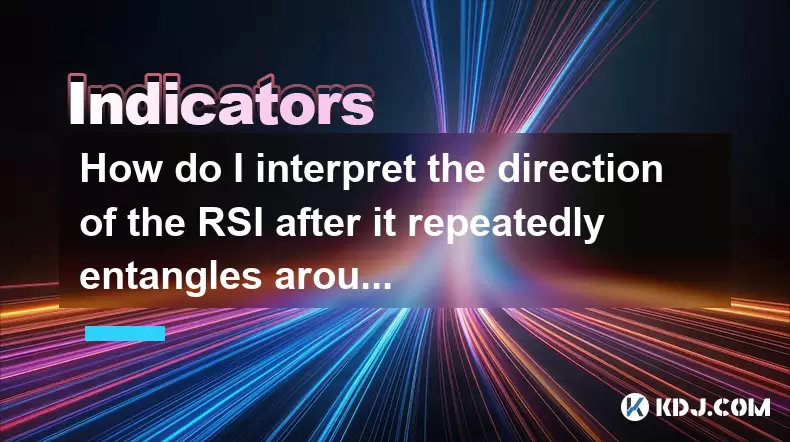-
 Bitcoin
Bitcoin $115100
-1.30% -
 Ethereum
Ethereum $4758
-1.70% -
 XRP
XRP $3.027
-2.19% -
 Tether USDt
Tether USDt $0.9998
-0.01% -
 BNB
BNB $883.2
-1.42% -
 Solana
Solana $204.0
2.62% -
 USDC
USDC $1.000
0.02% -
 Dogecoin
Dogecoin $0.2371
-0.97% -
 TRON
TRON $0.3612
-1.24% -
 Cardano
Cardano $0.9128
-2.19% -
 Chainlink
Chainlink $26.13
-3.93% -
 Hyperliquid
Hyperliquid $44.73
0.90% -
 Sui
Sui $3.715
-0.56% -
 Stellar
Stellar $0.4153
-2.41% -
 Ethena USDe
Ethena USDe $1.000
-0.04% -
 Bitcoin Cash
Bitcoin Cash $588.9
-2.06% -
 Avalanche
Avalanche $25.91
3.27% -
 Hedera
Hedera $0.2525
-1.45% -
 Litecoin
Litecoin $120.9
-1.35% -
 UNUS SED LEO
UNUS SED LEO $9.607
0.30% -
 Toncoin
Toncoin $3.382
-0.31% -
 Shiba Inu
Shiba Inu $0.00001329
-0.38% -
 Uniswap
Uniswap $11.38
-1.67% -
 Polkadot
Polkadot $4.222
2.83% -
 Aave
Aave $354.5
4.93% -
 Dai
Dai $0.0000
0.00% -
 Bitget Token
Bitget Token $4.704
-1.49% -
 Cronos
Cronos $0.1565
1.83% -
 Ethena
Ethena $0.7463
1.55% -
 Monero
Monero $265.8
-0.39%
How do I interpret the direction of the RSI after it repeatedly entangles around 50?
When RSI lingers around 50, it signals market indecision; a sustained breakout above or below with volume confirmation can indicate the next directional move.
Aug 13, 2025 at 11:36 am

Understanding the RSI and Its Core Function
The Relative Strength Index (RSI) is a momentum oscillator that measures the speed and change of price movements on a scale from 0 to 100. It is widely used in cryptocurrency trading to identify overbought or oversold conditions. When the RSI hovers around the 50 level, it suggests a balance between buying and selling pressure. This neutral zone often reflects market indecision, especially in volatile crypto markets where prices can shift rapidly. The 50 mark acts as a pivotal midpoint: values above 50 indicate bullish momentum, while those below suggest bearish momentum. However, when the RSI repeatedly entangles around 50, it signals that neither bulls nor bears are gaining control, resulting in a consolidation phase.
Interpreting Repeated Entanglement Near the 50 Level
When the RSI oscillates tightly around 50 over several periods, it typically indicates a lack of strong directional momentum. In cryptocurrency trading, this behavior often occurs during periods of sideways price action or low volatility. The entanglement suggests that gains and losses over the measured period (usually 14 candles) are nearly equal, resulting in an RSI value that fails to sustain movement above or below 50. Traders should pay attention to the pattern of these oscillations:
- Narrow range fluctuations imply tightening consolidation, possibly preceding a breakout.
- Frequent crossovers of the 50 line suggest back-and-forth struggle between buyers and sellers.
- Increasing amplitude in swings around 50 may hint at building momentum in one direction.
This phase is critical for identifying potential trend resumptions or reversals, especially when combined with price structure analysis.
Key Signals to Watch for Directional Breakouts
To interpret the direction of the RSI after prolonged entanglement around 50, traders should monitor specific breakout signals: - Sustained move above 50: When the RSI closes and holds above 50 for two or more consecutive periods, it may indicate emerging bullish momentum. Confirm this with rising volume and higher price highs.
- Consistent drop below 50: A confirmed close below 50 over multiple intervals suggests bearish dominance. Look for lower price lows and increased selling volume.
- Divergence patterns: If the price makes a higher high while the RSI fails to surpass a previous peak near 50, it could signal weakening bullish strength. Conversely, a lower low in price with a higher RSI trough may indicate hidden bullish momentum.
- Convergence with moving averages: Align RSI behavior with price moving averages. For instance, if the price is above the 50-period EMA and the RSI breaks above 50, the bullish case strengthens.
These signals help traders determine whether the entanglement is resolving into a new trend.
Practical Steps to Analyze RSI Behavior Around 50
To effectively interpret RSI direction after entanglement, follow these steps: - Adjust the RSI period to better suit the crypto asset’s volatility. While 14 is standard, reducing it to 9 increases sensitivity, helping detect early shifts.
- Overlay the RSI on multiple timeframes. Check the 4-hour, 1-hour, and 15-minute charts to see if entanglement occurs across all or only on specific intervals.
- Mark key support and resistance zones on the price chart. If the RSI entangles near 50 while price approaches a historical resistance, a bearish breakout becomes more likely.
- Use candlestick patterns near the 50 level. A bullish engulfing or hammer pattern coinciding with RSI rising above 50 adds confirmation.
- Incorporate volume indicators. Rising volume during an RSI breakout from the 50 zone increases the reliability of the directional move.
Each of these steps enhances the accuracy of interpreting the RSI’s next move.
Common Misinterpretations and How to Avoid Them
Many traders misread RSI entanglement around 50 as a sign of weakness or irrelevance. However, this phase often contains vital clues about upcoming volatility. One common mistake is treating every crossover of 50 as a trade signal. Frequent false signals occur in choppy markets. To avoid this: - Wait for confirmation. Don’t act on a single candle crossing 50. Require two consecutive closes beyond the level.
- Avoid isolation analysis. Never rely solely on RSI. Combine it with trendlines, volume, and price action.
- Account for market context. In a strong uptrend, RSI lingering near 50 may represent a healthy pullback, not a reversal.
- Watch for RSI compression. When the RSI coils tightly around 50, it often precedes a sharp directional move. Prepare for breakout strategies rather than range trading.
Misunderstanding these nuances can lead to premature entries or missed opportunities.
Integrating RSI Analysis with Crypto Trading Strategies
For cryptocurrency traders, integrating RSI behavior around 50 into a broader strategy improves decision-making. For example: - In a range-bound market, use RSI bounces off 50 as entries—buy when RSI crosses above 50 with bullish candle confirmation, sell when it drops below with bearish signs.
- During trend pullbacks, watch for RSI to dip into the 40–60 range and re-engage above 50 as a signal to re-enter in the trend’s direction.
- For breakout setups, monitor RSI when price approaches key levels. If RSI breaks 50 with volume support, it validates the breakout.
- In high-frequency trading, shorter RSI periods (e.g., 6 or 9) can capture quick shifts around 50, enabling scalping opportunities.
These applications make RSI a dynamic tool beyond simple overbought/oversold readings.
Frequently Asked Questions
Q: Can RSI staying near 50 indicate a strong trend?
Yes. In a strong trending market, RSI may hover around 50 during corrective phases, especially in cryptocurrencies with high momentum. This does not negate the trend; it reflects temporary equilibrium before continuation.Q: How long should RSI remain around 50 to be considered significant?
There is no fixed duration, but entanglement lasting at least 5 to 7 candlesticks on the chosen timeframe suggests meaningful consolidation. Shorter periods may just be noise.Q: Should I change the RSI settings when it keeps circling 50?
Adjusting the RSI period can help. A lower period (e.g., 9) increases responsiveness, making it easier to spot early directional shifts. However, this also increases false signals—use with caution.Q: Does RSI entanglement around 50 work the same across all cryptocurrencies?
Not exactly. Highly volatile coins like meme tokens may show erratic RSI behavior, making 50 less reliable. More established assets like Bitcoin or Ethereum tend to exhibit clearer patterns around this level due to more consistent trading volume and market depth.
Disclaimer:info@kdj.com
The information provided is not trading advice. kdj.com does not assume any responsibility for any investments made based on the information provided in this article. Cryptocurrencies are highly volatile and it is highly recommended that you invest with caution after thorough research!
If you believe that the content used on this website infringes your copyright, please contact us immediately (info@kdj.com) and we will delete it promptly.
- Crypto, Pepe, and Investment: Navigating the Meme Coin Mania in 2025
- 2025-08-24 06:45:29
- Crypto Market Recovery: Unearthing ROI Gems in 2025
- 2025-08-24 05:25:35
- Aave, World Liberty, and Token Allocation: Decoding the DeFi Buzz
- 2025-08-24 05:25:35
- Crypto Presales & Exchange Launches: What's Hot Now?
- 2025-08-24 05:45:17
- Meme Coin Mania: Experts Rank Layer Brett as the Top Contender
- 2025-08-24 05:45:18
- Sui Price Prediction: Will the Breakout Move Stick?
- 2025-08-24 06:05:29
Related knowledge

What does it mean when the +DI and -DI cross frequently in the DMI indicator but the ADX is flattening?
Aug 11,2025 at 03:15am
Understanding the DMI Indicator ComponentsThe Directional Movement Index (DMI) is a technical analysis tool composed of three lines: the +DI (Positive...

What does the sudden appearance of a "dark cloud cover" candlestick pattern during an uptrend indicate?
Aug 13,2025 at 11:35am
Understanding the 'Dark Cloud Cover' Candlestick PatternThe dark cloud cover is a bearish reversal pattern in technical analysis that typically appear...

What does it mean when the moving average, MACD, and RSI all send buy signals simultaneously?
Aug 11,2025 at 01:42pm
Understanding the Convergence of Technical IndicatorsWhen the moving average, MACD, and RSI all generate buy signals at the same time, traders interpr...

What does it mean when both the KDJ indicator and the RSI show overbought signals simultaneously?
Aug 13,2025 at 11:35am
Understanding the KDJ Indicator in Cryptocurrency TradingThe KDJ indicator is a momentum oscillator derived from the Stochastic Oscillator, widely use...

What does it mean when the price is trading above the SAR indicator but the red dots are densely packed?
Aug 09,2025 at 11:49pm
Understanding the SAR Indicator and Its Visual SignalsThe SAR (Parabolic Stop and Reverse) indicator is a technical analysis tool used primarily to de...

What does it mean when the candlestick chart forms a "Morning Star" but trading volume is sluggish?
Aug 12,2025 at 06:28pm
Understanding the Morning Star Candlestick PatternThe Morning Star is a three-candle bullish reversal pattern commonly observed in cryptocurrency pric...

What does it mean when the +DI and -DI cross frequently in the DMI indicator but the ADX is flattening?
Aug 11,2025 at 03:15am
Understanding the DMI Indicator ComponentsThe Directional Movement Index (DMI) is a technical analysis tool composed of three lines: the +DI (Positive...

What does the sudden appearance of a "dark cloud cover" candlestick pattern during an uptrend indicate?
Aug 13,2025 at 11:35am
Understanding the 'Dark Cloud Cover' Candlestick PatternThe dark cloud cover is a bearish reversal pattern in technical analysis that typically appear...

What does it mean when the moving average, MACD, and RSI all send buy signals simultaneously?
Aug 11,2025 at 01:42pm
Understanding the Convergence of Technical IndicatorsWhen the moving average, MACD, and RSI all generate buy signals at the same time, traders interpr...

What does it mean when both the KDJ indicator and the RSI show overbought signals simultaneously?
Aug 13,2025 at 11:35am
Understanding the KDJ Indicator in Cryptocurrency TradingThe KDJ indicator is a momentum oscillator derived from the Stochastic Oscillator, widely use...

What does it mean when the price is trading above the SAR indicator but the red dots are densely packed?
Aug 09,2025 at 11:49pm
Understanding the SAR Indicator and Its Visual SignalsThe SAR (Parabolic Stop and Reverse) indicator is a technical analysis tool used primarily to de...

What does it mean when the candlestick chart forms a "Morning Star" but trading volume is sluggish?
Aug 12,2025 at 06:28pm
Understanding the Morning Star Candlestick PatternThe Morning Star is a three-candle bullish reversal pattern commonly observed in cryptocurrency pric...
See all articles

























































































